Going out of Hijiribashi exit in Ocyanomizu station on JR Chuo-Line and turning to the left, one gets to the edge of Hijiribashi-Bridge spanning Kanda River.After crossing the bridge, an emerald-green colored gabled roof of a building in a grove, comes into sight on the right side of the bridge. It is called “Yushima-Seido” which was founded in memory of Chinese philosopher, Confucius by the 5th Shogun, Tsunayoshi Tokugawa in 1690.It was established as a learning place of Tokugawa Shogunate in Edo period and is said to be the birthplace of Japanese modern education in Meiji Period. At the height of its prosperity, it covered the area of 53,000M2 including the campus of the Tokyo Medical and Dental College on the left side of Hijiribashi-Bridge.It was a site where Razan Hayashi, Neo-Confucianist and his followers were lecturing on their ideology for students. Razan Hayashi was one of the advisers to the first Shogun, Ieyasu Tokugawa. “Yushima-Seido” was greatly contributing to fostering of human resources in Tokugawa Shogunate during Edo period. There used to be Tokyo Higher Normal School (current National University of Tsukuba) and Tokyo Women’s Normal School (current National Ocyanomizu University) in Meiji Period.The management organization named “Kibunkai” hold Confucian Festival in Yuhima-Seido on the 4th Sunday of April every year, they are a society of Confucianism and oriental arts & science.
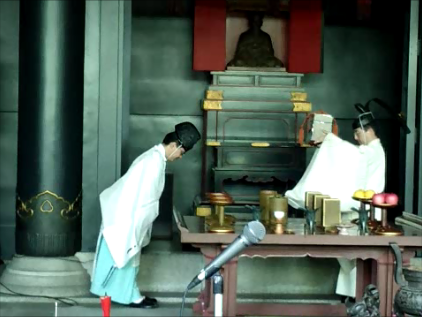
The ritual ceremony called “Syakuten” is solemnly conducted by Shinto priests with large attendance of scholars and students in the field, paying their respects to Confucius and his followers.The priest opens the door of an altar in the main hall named “Taiseikan”, where an image of Confucius is being worshipped, purifies all the attendances and then offers Japanese wine, fish and vegetables to the image. A group of students recite a poem and also a head master of a tea school named “Shoufukagetsu” offers tea ceremony in praise of Confucius. The ceremony dates back to 701 in Asuka period. In Heian period, it was carried out in imperial court.Two bronze statues named “Kigintou”, a chimera figure having a dragon head and a fish body with 2 legs, blowing water, are being placed at the both ends of the top ridge of the roof on Taiseikan Hall. Two other statues like a tiger are rested at both ends of drooping ridges. These are imaginary creatures and are believed to be guardian to protect the hall against fire disaster and other calamities. And a statue of Confucius with 4.6 M height is also being displayed in the precinct.
Yushima-Seido:
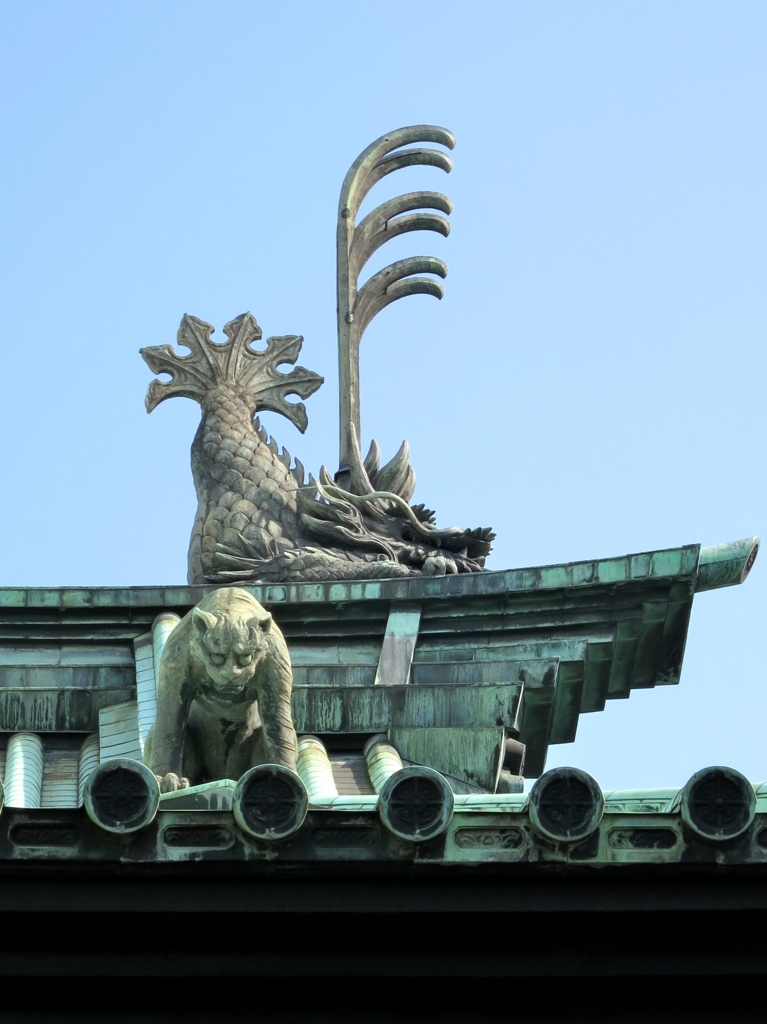
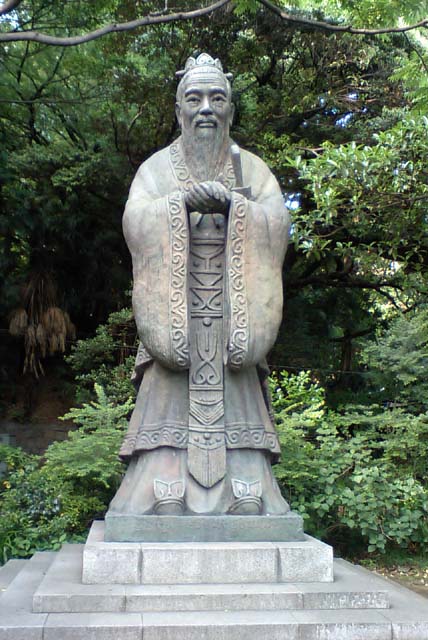
It has been observed that a lot of students visit Yushima-Seido to pray their success in entrance examination every year.
Kanda Shrine:

Proceeding the street along Yushima-Seido, one reach Hongo-Street. Turning the street to the right, a Torii-Gate of Kanda Myoujin comes out on the left side of the street. Kanda-Myoujin was established in 730. It is one of prestigious shrines in Tokyo.The shrine worships 3 deities, “Oomunaji-No-Mikoto and Sukunahikona-No-Mikoto described in Japanese myth, and Taira-No-Masakado, a reigning clan in Kanto area (region consisting of Tokyo and its surrounding areas).
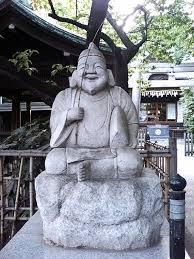


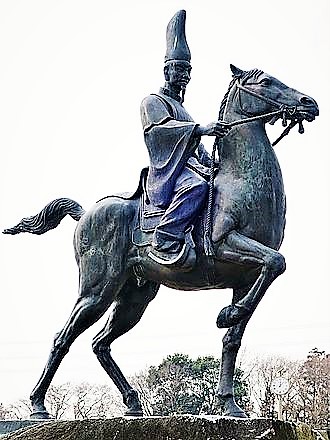

“Oomunaji-No-Mikoto” is also called “adorable Daikoku-Sama” who is holding a mallet in his right hand and sling a big cloth sack over his left shoulder, sitting on straw rice bags with all smiles. It is said that a lot of gold coins would drop out of the mallet when he shakes it and the big sack holds treasures. He is believed to be a deity for wealth,farming and commerce.Sukunahikona-No-Mikoto is also named “lovely Ebisu-Sama” who is keeping a fishing rod in his right hand and holding a red snapper in his left arm with warm smile. He is believed to be a deity for blessing food from sea and prosperity in business.The third is “Taira-No-Masakado”, a brave warrior who is a deity for victory of battle.
On the shrine ground, one can find big stone statue of “Daikoku-Sama” and a tiny gold statue of “Ebisu-Sama” surrounded by billowing wave.Surprisingly a black live pony is fed as sacred horse for a ritual ceremony.Kanda Shrine has been familiar to people as a guardian deity of Edo area (Current Tokyo) since log ago. It is said that the first Shougun, Ieyasu Tokugawa who governed Edo city, prayed to Kanda Shrine for his victory of Sekigahara battle with Toyotomi family happened in 1600. He resulted in winning the day. Since then Tokugawa family revered Kanda Shrine as guardian deity of their domain.At the time of Kanda Shrine Festival, floats of the shrine were specially allowed to enter Edo Castle and, Shougun and his followers viewed the marching of the parade. The shrine had been enjoying Tokugawa’s patronage throughout Edo period. It is said that Meiji Emperor also visited to worship the shrine. In the shrine ground, there are 10 numbers of small prayer’s halls surrounding the main hall of Kanda Shrine. They are managed as subsidiary shrines under Kanda Shrine. Among these small shrines, Edo Shrine is the oldest in Edo city. Kagoso Shrine worships ancestors of craftsman of bamboo and voluble stem baskets. Nihonbashi-Uogashi Shrine enshrines a guardian deity for fish market. Konpira
Shrine is adored by waterman on Sumida River. Shusse-Inari Shrine is prayed for promotion.On the first business day in January, Kanda Shrine receives visits to pray from many top managements whose offices located in Akiharaba, Nihonnbashi, Oote-Machi and other areas within the shrine parish. They pray for success in their business every year.

It is worth seeing Kanda Shrine Festival which is held for four days in the middle of May every year 3 deities being enshrined in the main hall are transferred respectively to 3 portable shrines by priests in accordance with a ritual ceremony in Shintoism. The ritual is solemnly conducted while sublime music is played with Japanese traditional musical instruments such as a bamboo flute called Ryuteki, a small double-reed instrument named Hichiriki, a free reed instrument with 17 slender bamboo pipes called Sho,gong and drums. Subsequently a laborer’s chanty is sung by groups of firemen consisting of scaffolding workers and steeplejacks. A historical work song reverberates throughout shrine ground. This ceremony is called “Shin-Ko-Sai” in Japanese. Then the 3 portable shrines are launched out of the Kanda Shrine ground.

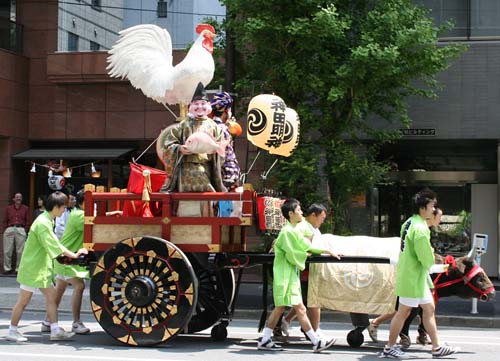
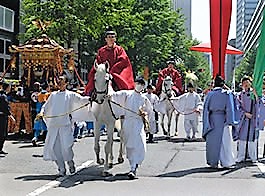

Groups of firemen lead the parade. Shrine parishioners wearing the costume of nobles from Heian Period, carry 3 portable shrines, a float mounted with decorative rooster,“Diakoku-Sama” and “Ebisu-Sama” and an ox-carriage with 2 lion heads, followed by priests and warriors riding on horses. The procession extends approximately 500 M. The parade goes around 108 of shrine parishes such as Nihonbashi, Ootemachi,Marunouchi, Akihabara and etc. for a day. It is so rich in pageantry.

About 200 portable shrines representing parishioners’ areas, are launched by parishioners and carried around their areas on a next day. One can enjoy so brave and dynamic scenery.On subsequent days, Japanese traditional art, Noh is played on a stage in shrine ground. And a tea ceremony is performed by a head of Omote-Senke school. One can observe his artistry in serving green powdered tea.,Kanda Shrine festival is sophisticate as well as brave. It is in a different class from other festivals in Tokyo.
Origami Kaikan (Paper Folding Center)
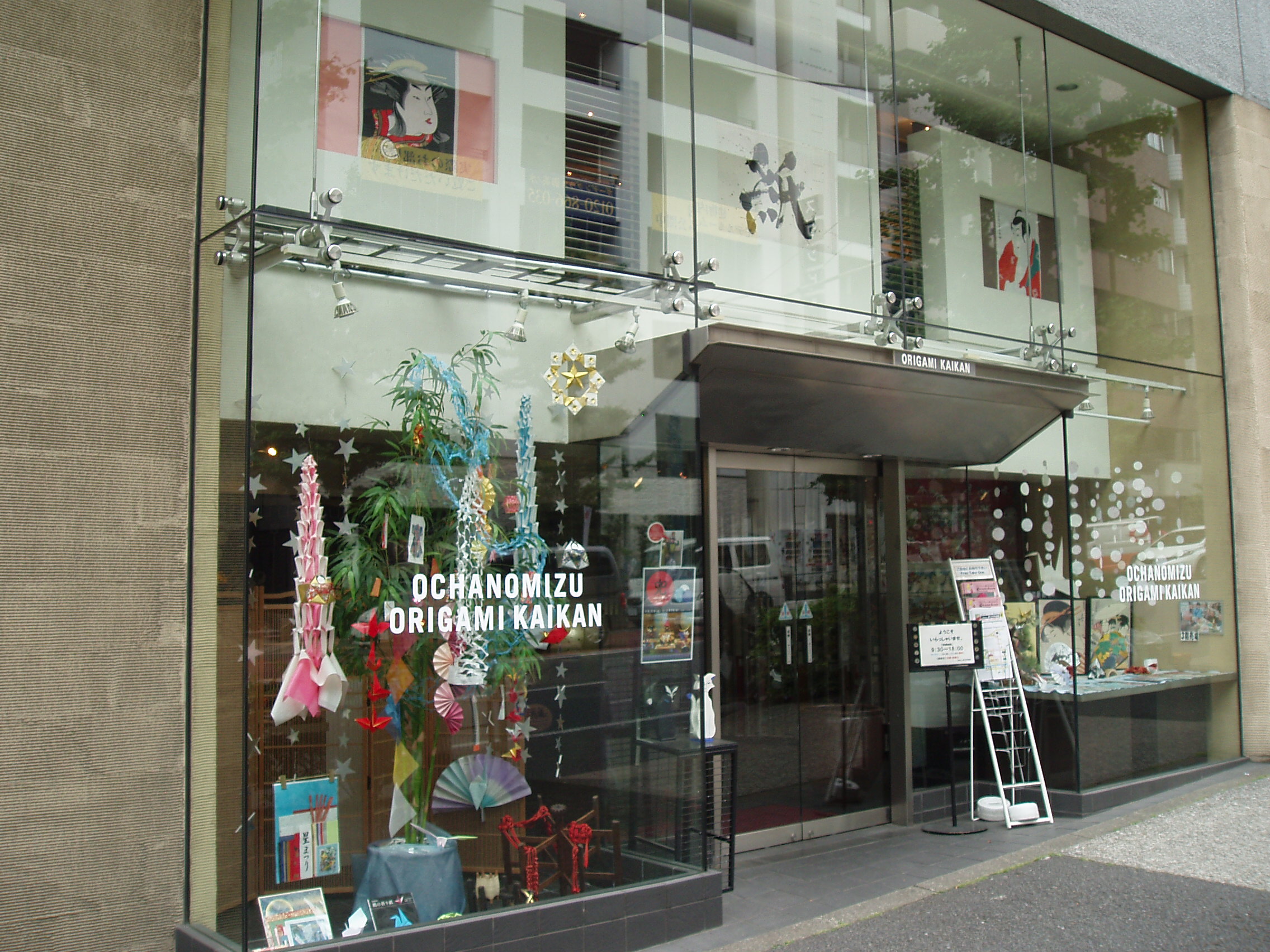
Behind the main prayer’s hall of Kanda Shrine, there are downward steps of access to Kuramae-Street. Turning the street to the left and proceeding by one block, one can find the Origami-Kaikan at the corner of the crossroads named Shimizu-Sakasita-Kousaten.It is a 6-story building with the show-room on the grand floor in which various colorful paper crafts are exhibited.Origami Kaikan is originated in a paper-making and -dying workshop named “Yushima-No-Kobayashi” which was founded by Kosuke Kobayashi at Yushima at the end of Edo
Period in 1858. It is said that they were mainly functioning as paperer of slide door and picture framer for Kaneiji-Temple on Ueno hill.Origami Kaikann is now engaged in paper dying and sales of Japanese traditional Washi paper, materials for paper doll and other paper arts & crafts.They also open classes of paper arts and crafts makings such as a paper doll making,a paper folding and collage with torn pieces of colored paper. And they also dispatch lecturers overseas as well as domestic to introduce culture of Japanese traditional Washi
paper through their planned events.
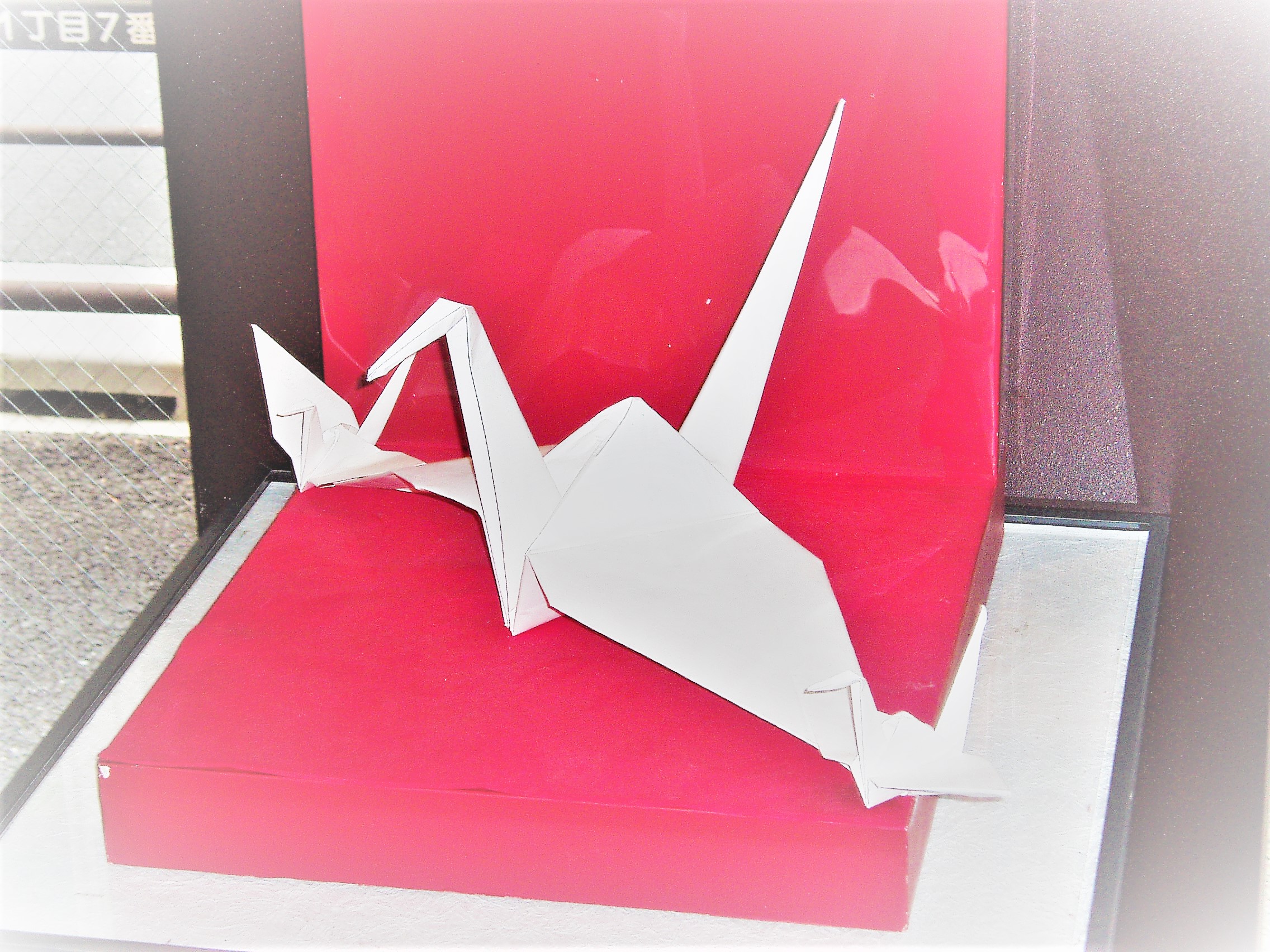
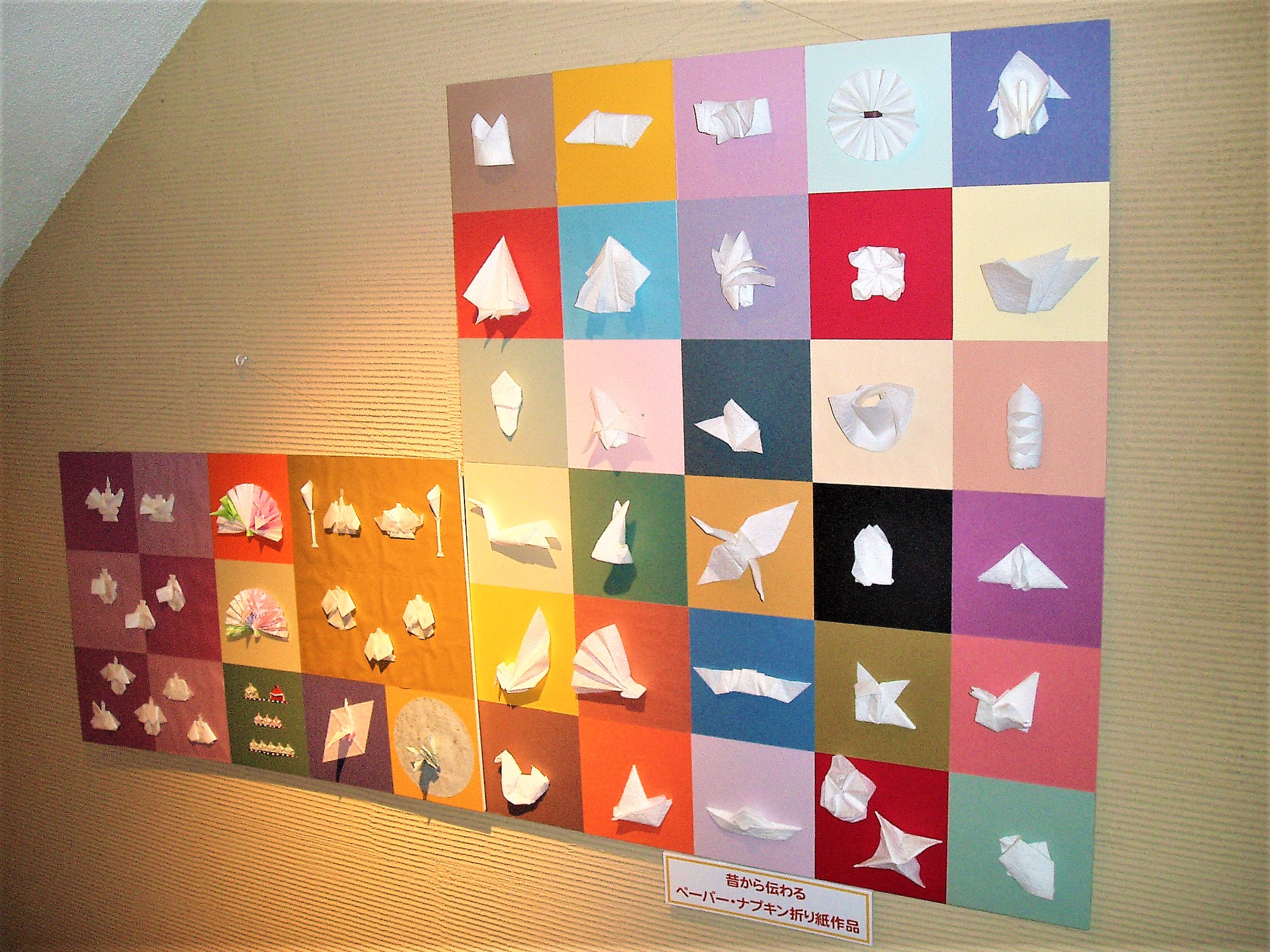
On the ground and mezzanine floors, they are marvelously exhibiting various styles of paper folding crafts, paper handicrafts and colorful Washi-paper depicting Japanese historical manners and customs. On the third floor, they are selling their paper products.They are using the fourth floor for dying paper workshop. Visitors can inspect paper dying process here. The floors above fourth are utilized for classrooms and conference rooms.“Ori-Gami” is a traditional Japanese play or game to fold beautifully designed paper into various shapes of flora and fauna, and utensils around us such as crane, frog,morning glory, airplane, balloon, Kimono and etc. Origami-fans have been increasing in Europe and U.S.A, and it has been spreading over the world recently. It becomes international game play for adult as well as for children. The origin of Japanese Origami is not well known but it is said to begin in between 16th Century and the beginning of 17th Century. When Edo period began, most of feudal lords across the country promoted Washi-paper production. As a result, the production increased and the price of Washi came down to such level that ordinary people could use it as a material of Origami. In addition to the amusement practice, the paper holding was made to form “Noshi” which was a symbol of courtesy being traditionally attached to gifts on the occasion of celebration. The “Noshi” was worked out by folding colored papers into a slender hexagonal shape with creases.The paper folding makes use of a sheet of dyed square paper with 15CM sides which was hand-made paper or machine-made. It sometimes employs larger or smaller size than the usual.
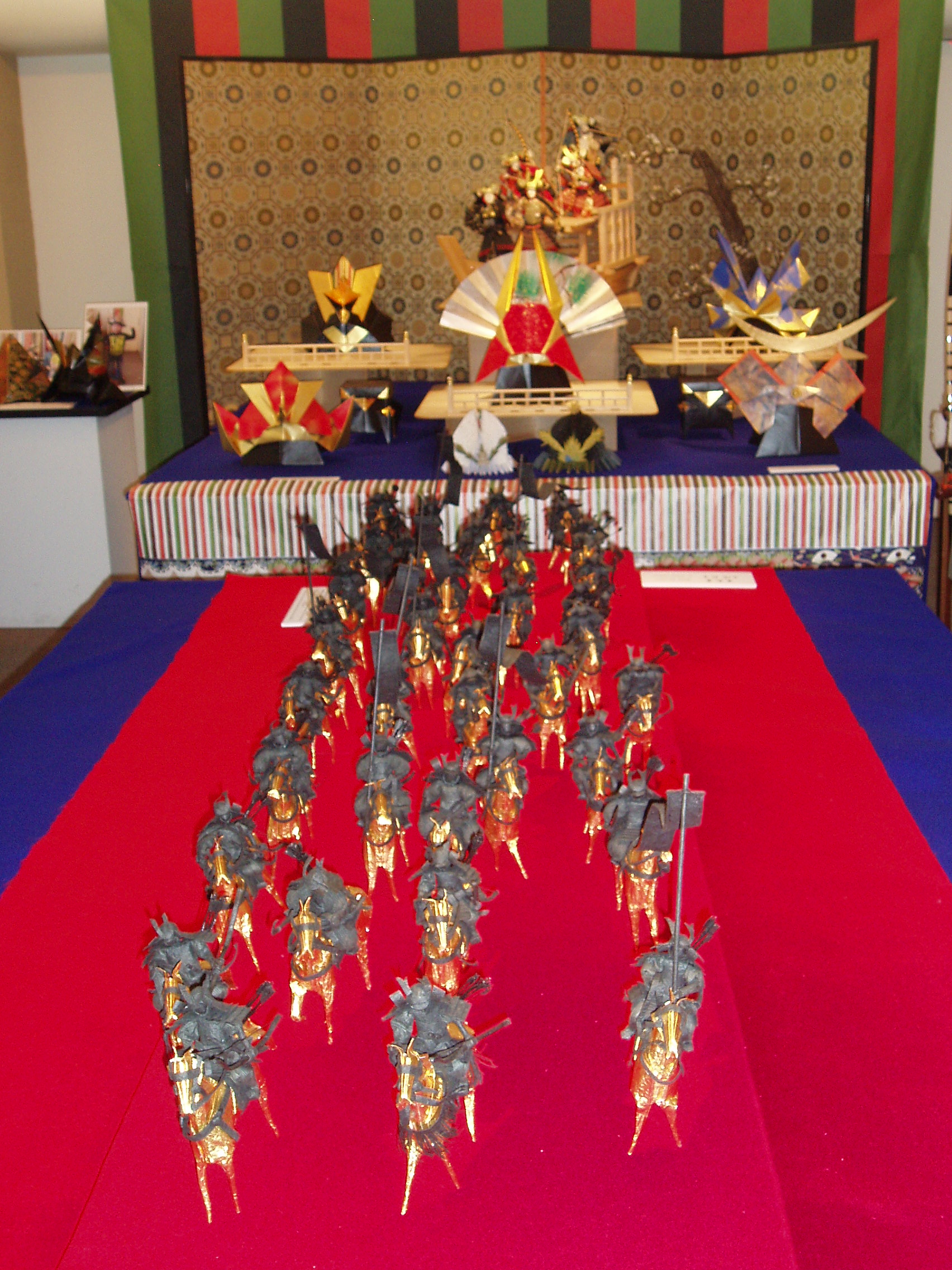
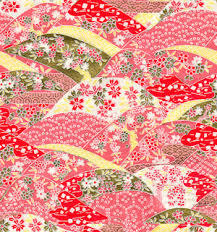
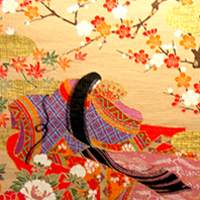
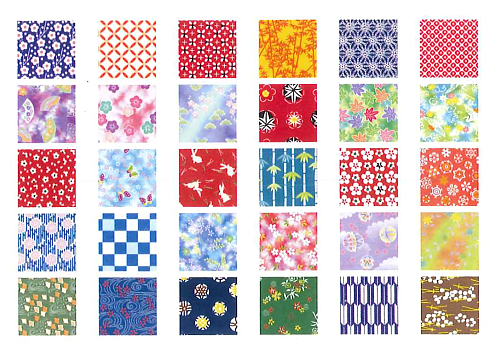
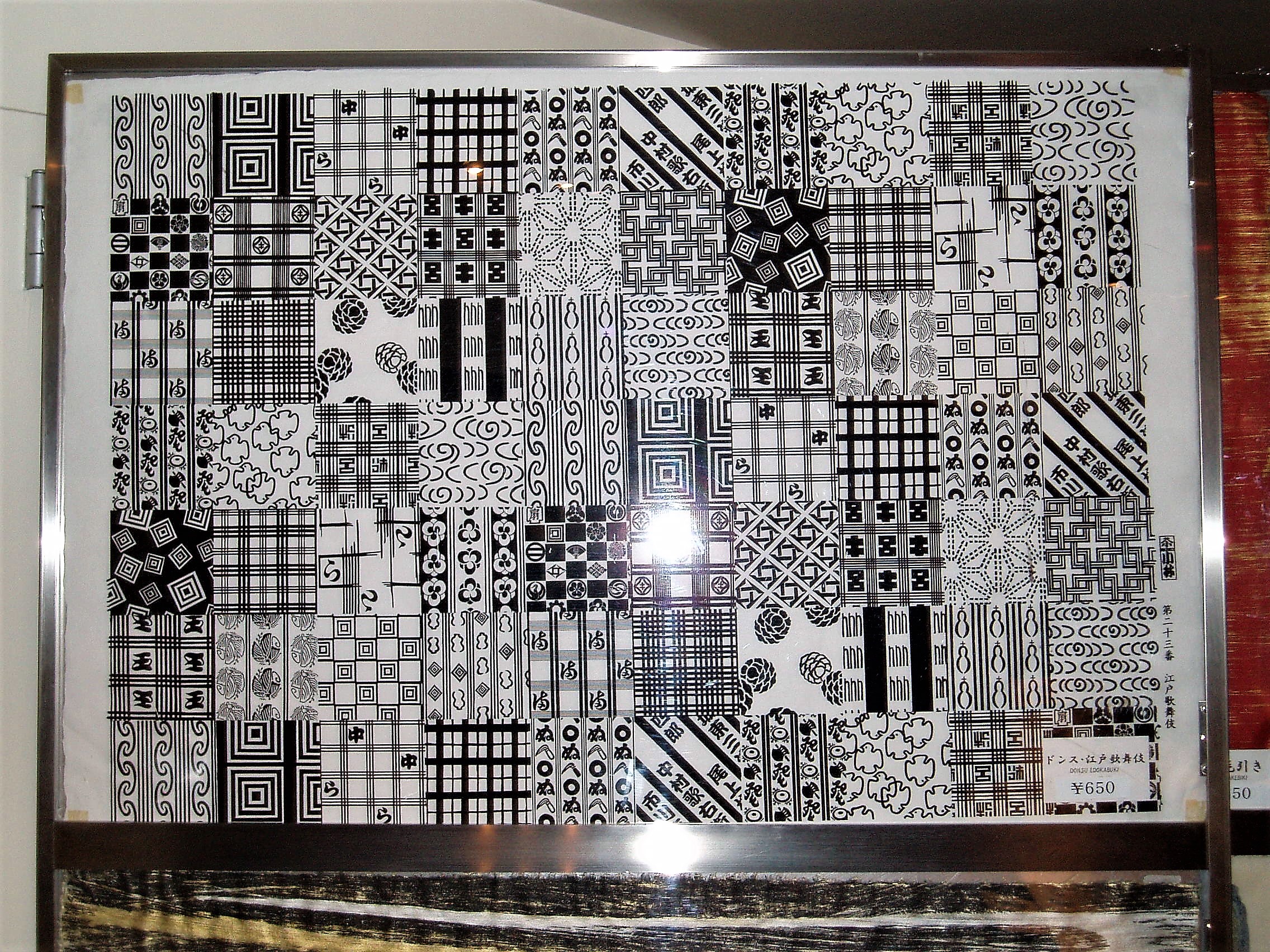
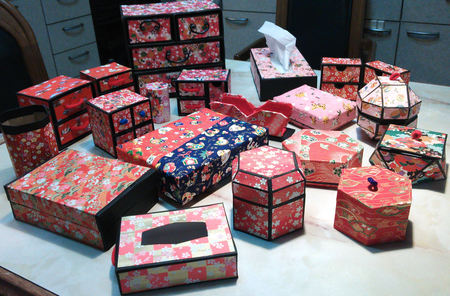


In Edo Period, it used dyed Washi paper depicting various patterns called “Chiyogami” which Ukiyo-E artists designed. The craftwork of wood-block print and multicolor print are improved so that “Chiyogami” became diversified and popularized across the country.It designed with a motif of Kabuki play, its actors with unique make-up,historical regular stripe patterns and etc. “Chiyogami” is also used for a dress of paper doll, artifact, fancy box and wrapping paper.When times shifted from Edo period to Meiji in 1868, Japan changed the policy of seclusion and opened up ports to trade with overseas countries.Since then Japanese folding paper was handed down to Europe and U.S.A. At the same time, European folding paper was introduced into Japan. For example, it is said that paper balloon and paper sailing ship are originated in Europe.
The European paper folding was applied to childhood education by German Friedrich Fröbel who is said to firstly established kindergarten in the world.He chose the European paper folding as one of 20 educational tools called “Gabe=Gift”. In 1972, his new theory of education was introduced into Japanese kindergarten by the ministry of education. Japanese Origami was taken up as educational tools.Fröbel’s Gabe inspires children to have creative thinking and ability of concentration by giving various geometric shapes such as polygon, polyhedron, circle and sphere, and then by letting them engage in cutting, making a hole, assembling, weaving and folding on their objects.The Origami has recently been incorporated into art fields because of its intricate aesthetic feature. Some of artist have developed a technique called “wet-folding” which enables expression of more sculpted look in the paper folding practice.
In the meanwhile, Origami has also been evaluated in the field of mathematic field because of its geometric property. Even in engineering field, it has been applied to find out processes for folding and expansion of structure.For example, it has been utilized for folding of solar cell panel being attached to satellite, air-bag in automobile and artificial implant named stent graft in medical field. Now Origami is not only a pastime for children but also profound application to various fields. It becomes widespread over the world.
